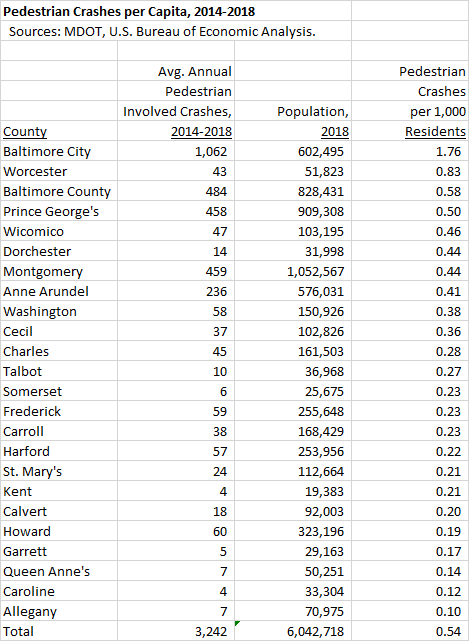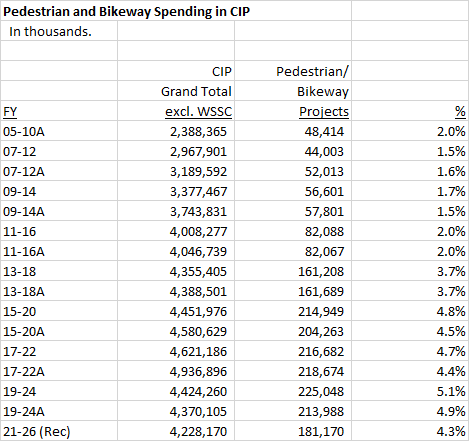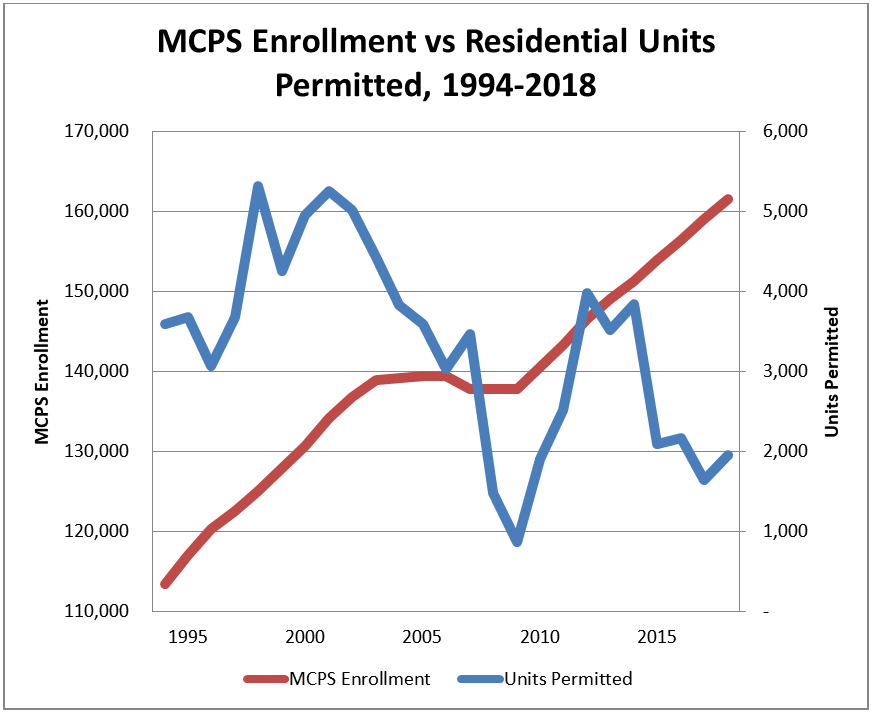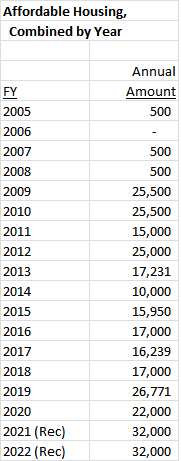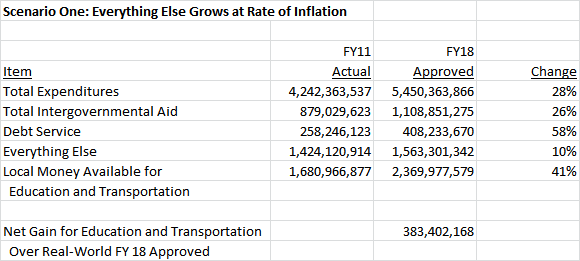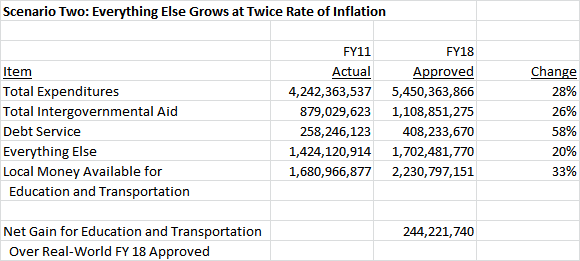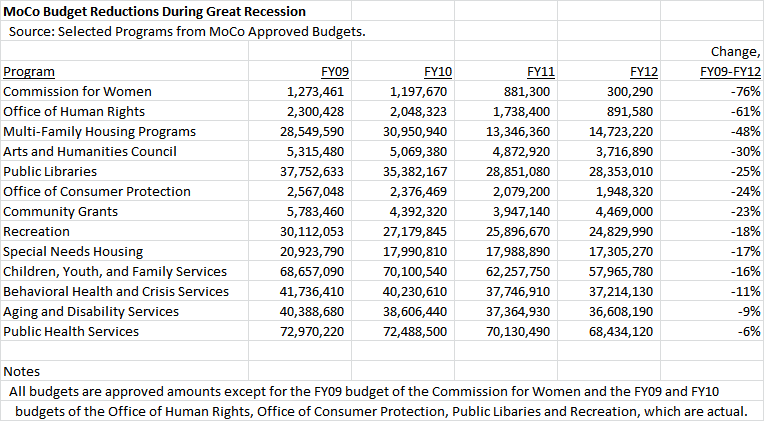By Adam Pagnucco.
Last night, Council Member Nancy Navarro, who chairs the council’s Government Operations Committee, wrote on my Facebook page that she intends to introduce a council resolution on Tuesday calling for major spending restraint in the county’s budget. Specifically, the resolution calls for a same services budget for each department and agency; holding Montgomery College and MCPS to maintenance of effort (which is the state’s mandated minimum for local appropriations to those agencies); and providing flexibility to assist residents and businesses as well as to revisit spending after the coronavirus crisis ends. Navarro claims that Council Members Andrew Friedson, Gabe Albornoz, Craig Rice and Hans Riemer are co-sponsoring her resolution.
It’s worth noting that Navarro is the only current council member who was on the council during the budget crisis of 2010.
The resolution does not yet appear on the council’s agenda for Tuesday, but the current text as shared by Navarro appears below.
SUBJECT: Options for the Approval of and Appropriation for the FY 2021 Operating Budget Background
1. As required by Section 303 of the County Charter, the County Executive sent to the County Council the FY 2021 Operating Budget on March 16, 2020.
2. As required by Section 304 of the County Charter, the Council must hold public hearings on the proposed operating budget.
3. A new coronavirus disease, called Covid-19, has spread extremely quickly, making its way to over 100 countries, including the United States.
4. On March 11, the World Health Organization officially declared the Covid-19 viral disease a pandemic.
5. The number of new cases in the United States is growing quickly and has spread to each of the 50 States, the District of Columbia, Puerto Rico, Guam and the US Virgin Islands.
6. To slow the spread of this communicable disease, Governor Hogan issued several emergency orders closing all non-essential businesses, restricting public transit, closing schools, prohibiting public gatherings of 10 persons or more, and postponing the Presidential Primary Election in Maryland.
7. Although County government operations are continuing during this pandemic, County employees are using situational teleworking wherever possible to perform their duties. Due to the need to limit person to person contact, many County residents have lost paychecks and many County businesses have lost revenue.
8. The Executive was required by the Charter to develop his recommended FY2021 Operating Budget before the most recent events clarified the full extent of the pandemic.
9. Considering this unprecedented global pandemic and national state of emergency, the Council must move expeditiously to provide continuity of operations in approving an operating budget for FY2021 that provides additional flexibility to help County residents and businesses recover.
Action
The County Council for Montgomery County, Maryland approves the following resolution:
1. The Council directs staff to develop viable options to streamline our budget process, so that for FY 2021, the Council may adopt an aggregate operating budget for our departments and agencies that reflects a continuation of the services provided at the same level as FY2020.
2. These viable options must include funding the Operating Budgets of the County Board of Education and Montgomery College at the required Maintenance of Effort level and should avoid funding any new programs unrelated to relief for County residents and businesses from the Covid-19 viral disease pandemic.
3. These viable options should include flexibility for possible future appropriations:
a. to assist County residents and businesses to recover from the Covid-19 viral disease pandemic; and
b. to provide additional resources for other County programs and employee wage and benefit enhancements, if available, after the crisis is over.
This is a correct copy of Council action.
_________________________________
Selena Singleton
Clerk of the Council


